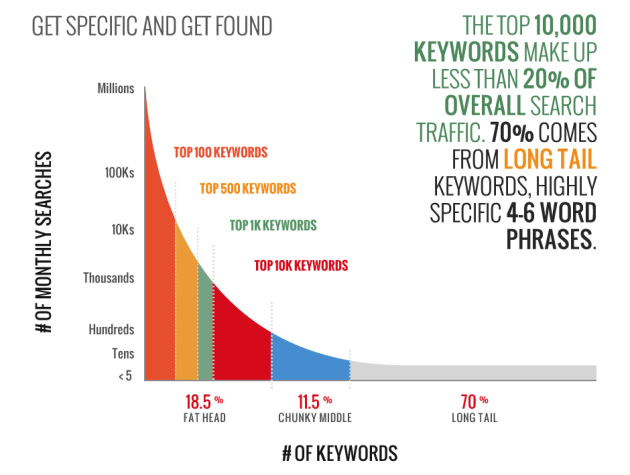Collectively, the commercial, industrial, and residential construction industry is one of the most competitive markets around. One search for “construction companies” for Vancouver, BC alone delivers a total of 1,065 results! One issue plaguing the construction industry, however, is that it continues to try competing with antiquated marketing channels (i.e. Yellow Pages).
Thankfully, you’re already taking a big step forward by seeking information about SEO for construction companies. In doing so, you’re about to gain a competitive advantage over the small, medium, and large operators alike who are lagging behind in building their most important project—their online presence.
Strategis Consulting’s staff have years of experience in search engine marketing for general contractors. They can provide you with a blueprint for how to increase your rank on Google and access bids previously out of reach.
5 Tips to Getting Your General Contracting and Construction Business Website on Top of Google Page One
- It All Starts with the Foundation (Website Architecture)
A strong foundation sets the tone for the strength and sustainability of your website and subsequent search engine marketing success. If something is wrong with the initial architectural design, then your site is doomed to fail. This is where we reference what is known as on-page SEO, which is the framework for how your website is built.

On-page SEO accounts for up to 30% of search engine rank, so you can see how important it is, and how it should be the first thing you attend to before anything else. On-page SEO includes everything from your initial site map to the navigational flow and meta-data structure (where you will place important keywords) of your site. In addition to mobile responsiveness and page speed, the latter two play a very important role in 2018 and beyond. There are many ways to tell whether your house is in order in this regard. While an SEO provider will provide you with more insight, you can at least investigate mobile responsiveness and page speed by copying and pasting your website URL into this Google provided PageSpeed tool. If your website is “in the red” (or even amber) for Mobile and/or Desktop delivery you will need to address the architectural concerns right away.
How do you attend to these on-page concerns? By finding an online marketing firm to apply the design-build concept to your website.
- Keyword Targeting by Geography and Sector
If you’re a residential contractor serving Burnaby, BC, (for example) you have a very clear keyword goal. However, if your construction business services the residential, commercial, and industrial sectors in the Lower Mainland, you will need to do a lot more homework before deciding upon your keyword targets.

There will be varying levels of competition for each sector (residential, commercial, and industrial) and for each region (Abbotsford, Burnaby, Richmond, Surrey, Vancouver, West Vancouver, etc.). You need to identify the low hanging fruit (so to speak), keyword targets that you have a better shot at ranking higher. For example, you may currently rank on Google Page 2 for the keyword target “commercial building contractors Surrey” while you’re not even on Google’s radar for “commercial builders Vancouver”. Sure, the latter expression will theoretically bring you more traffic and bigger bids but gaining ground for that term could take a year or more. The former target, however, can see you hitting Google Page 1 within three months or less, and bring you bids and revenue much sooner. Remember, by targeting what we call “long-tail” keywords, you will be supporting your longer-term keyword goals (i.e. “commercial builders Vancouver”) while at the same time driving in clients today.
So how the heck do you identify these lucrative keyword targets? By setting up a Google Ad account and conducting an analysis of keywords (along with search volume for each) that are being searched in your area. Once you have built your list of keyword targets, you can simply perform a Google search and click through the search engine results pages (SERPs) to see where your website sits relative to competition. From there, you can identify the aforementioned low hanging fruit. Just make sure you’re not signed into your Google account when you do so, as that will skew the results and make it look like you’re ranking better than you really are.
In the end, only an SEO expert can generate a strategic table of keyword targets, but by playing around with the Keyword Planner and navigating the SERPs you will better grasp the keyword targeting concept. We encourage our clients to educate themselves as much as possible before we enter into a relationship with them (you).
- Keyword Targeting by Building Concepts
Now that you have some insight into the keyword identification process, we can dive deeper in the longtail keyword concept. This is where your unique skill set and building products/services come into play.
When you target keywords that address very specific building concepts, you have an even better shot at ranking for high-converting expressions, which will target clients who are much further along in the purchase and decision-making process. For example, let’s say one of the things that makes your contracting business unique, is that you specialize in insulated concrete forms (ICF) and other green building initiatives. In addition to targeting your primary keyword expression (i.e. “commercial building contractors Surrey”) you can also target “ICF builder Vancouver” and/or “LEED builder Vancouver”, affording you a two-pronged attack on the competition. The same applies to any building concept that makes your business unique, from pre-engineered steel buildings, design-build luxury home builders and commercial building renovations and everything in between.

Photo from: raventools.com
While the search volume for these specific terms are more limited, the search is coming from clients who are VERY close to securing a contractor, and that bid can go to YOU if you position yourself on Google accordingly.
Once you have all of your keyword targets lined-up, they must be integrated into the meta-data (as per item #1 above) and into the content of the appropriate pages on your website, in addition to being included in your weekly blog post updates.
- Building Links for Your Builder Business
With your on-page issues addressed and your keyword targets executed within static (pages) and updated (blog posts) content, you now need to switch focus to what is called off-page SEO, predominantly in the form of backlinks.
What are backlinks? These are links that reside on other websites that point back to your website. This is the most challenging part of SEO, because not just any website will do. It needs to be an authoritative website that hosts content that is semantically relevant to your business. Types of websites with content relevant to the construction industry include (but are not exclusive to) the following:
- Construction industry online news resources
- Realtor and real estate agent websites
- Interior design/decor websites
- Architecture news websites
- Local online periodicals reporting on local area building developments
- Trade school websites
- Construction specific directories
If you have any connections to writers, bloggers, or media for any of the above, reach out to them to see if they are willing to reference your business on their websites’. True, this process will occur naturally with a strong content delivering strategy on your website, but it will take longer to achieve. For instance, by updating your blog on a weekly basis with informative, engaging, and useful content online writers will find this content (via search); and when the information you provide is relevant to an article they themselves are writing, they may very well reference it via linked attribution to your website.
Again, this is a very challenging part of the SEO process, and one that often requires media/blogger outreach support from an online marketing firm but given that your backlink profile accounts for about 20% of search engine rank, it’s certainly worth the effort and investment.
- Google My Business (and other social signals)
 Your construction business wants to get on the Google Map for your service area. Once there, you not only have a shot at getting two results on Google Page 1, you will have the opportunity to secure Google Reviews (which impacts rank) and engage/reengage clients who post reviews, while being able to answer questions posed by prospective clients right there on the Google Search Engine Results page (SERP). This can all be accomplished by setting up your Google My Business (GMB) profile and verifying your website on GMB. You can start the process here, but if you’re concerned about whether or not you’ll miss a step, it may be better to leave set-up and management to a professional.
Your construction business wants to get on the Google Map for your service area. Once there, you not only have a shot at getting two results on Google Page 1, you will have the opportunity to secure Google Reviews (which impacts rank) and engage/reengage clients who post reviews, while being able to answer questions posed by prospective clients right there on the Google Search Engine Results page (SERP). This can all be accomplished by setting up your Google My Business (GMB) profile and verifying your website on GMB. You can start the process here, but if you’re concerned about whether or not you’ll miss a step, it may be better to leave set-up and management to a professional.
![]() And what about the other social tools (GMB isn’t really a social network), out there? Well, since social network signals account for about 5% of search engine rank in 2018 and for the foreseeable future, it is absolutely necessary that your construction business set up and maintain (even with just one post per week) a LinkedIn, Facebook, Twitter, and Instagram (connected to Facebook) profile. Consider this, if all else is equal, and either you or a competitor is the one with a full suite of social networks, the one that plays the social game will earn a higher spot on Google. If you don’t have the time to bother with social media, simply let a professional manage it for you.
And what about the other social tools (GMB isn’t really a social network), out there? Well, since social network signals account for about 5% of search engine rank in 2018 and for the foreseeable future, it is absolutely necessary that your construction business set up and maintain (even with just one post per week) a LinkedIn, Facebook, Twitter, and Instagram (connected to Facebook) profile. Consider this, if all else is equal, and either you or a competitor is the one with a full suite of social networks, the one that plays the social game will earn a higher spot on Google. If you don’t have the time to bother with social media, simply let a professional manage it for you.
There’s certainly more to the realm of search engine optimization/marketing and how it can be applied to push your construction business website to the top of Google, but with all the above you are now ready to make a more educated decision about which direction you should take. The next step, is to contact Strategis Group today to get started and leave the competition in the dust.
 Marcus’ diverse online marketing background in a wide variety of industries enables him to dig deep into the SEO needs of any business. Marcus has become a search engine marketing specialist and has worked with clients overseas, on the Hawaiian Islands, and throughout the western coast of the U.S. and Canada. At any given moment he can be found covering the U.S. Open of Surfing in Huntington Beach (CA), braving a Jeepney ride through the Philippines, conducting business at a luau on Oahu (HI), or back at his home base in Vancouver (BC) writing blogs for SEO clients. Marcus would be more than happy to work with you.
Marcus’ diverse online marketing background in a wide variety of industries enables him to dig deep into the SEO needs of any business. Marcus has become a search engine marketing specialist and has worked with clients overseas, on the Hawaiian Islands, and throughout the western coast of the U.S. and Canada. At any given moment he can be found covering the U.S. Open of Surfing in Huntington Beach (CA), braving a Jeepney ride through the Philippines, conducting business at a luau on Oahu (HI), or back at his home base in Vancouver (BC) writing blogs for SEO clients. Marcus would be more than happy to work with you.

